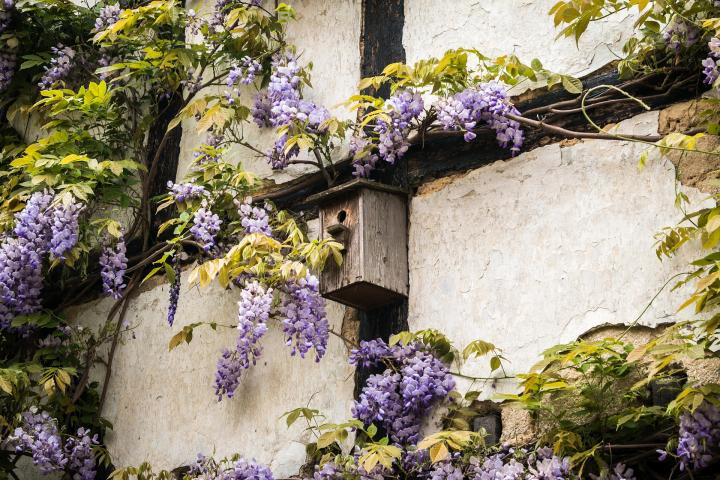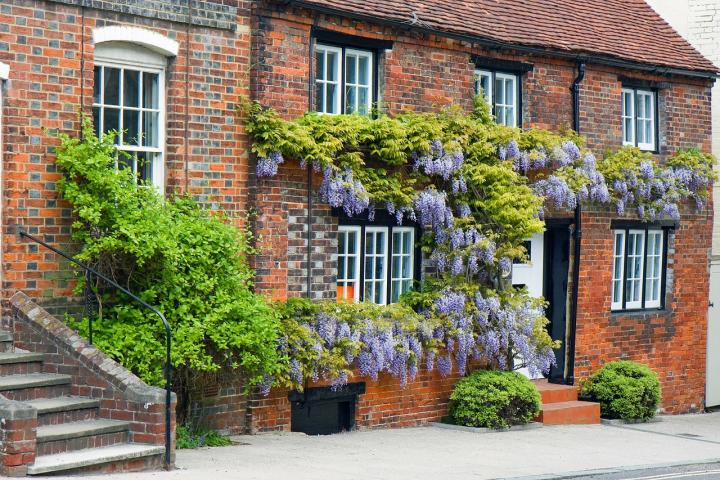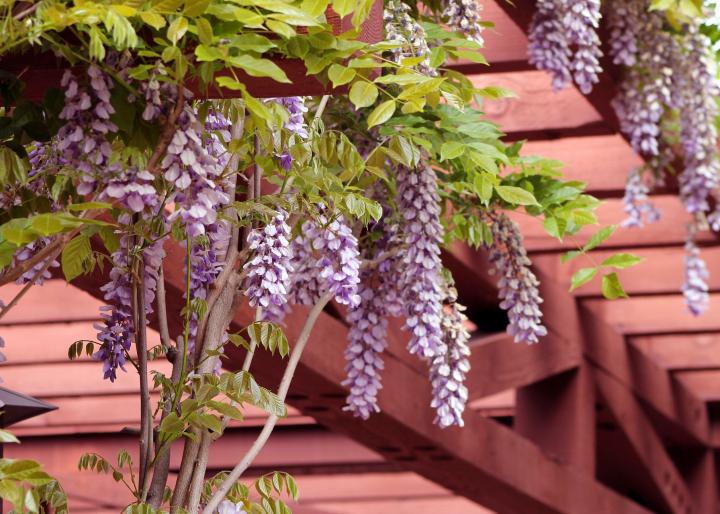
Photo Credit
Pixabay
Subhead
Planting, Growing, and Pruning Wisteria
Read Next
Types
Native Wisteria
If you are located in North America, consider planting a species of wisteria native to the continent, such as:
- American wisteria (W. frutescens) grows in Zones 5 to 9. It’s native to a range of states covering Virginia to Texas, southeast to Florida and north up through New York, Iowa, and Michigan. The vine grows 25 to 30 feet long with shiny dark-green leaves and large, drooping lilac or purple-blue flower clusters, which appear after the plant has leafed out. The blooms will only appear on new wood. However, note that the flowers tend to be more lightly fragrant than the Asian wisterias’ flowers.
- Kentucky wisteria (W. macrostachya) grows in Zones 4 to 9. This late-season bloomer is native to the southeastern U.S. and is similar to American wisteria (it is sometimes considered a variety or subspecies of American wisteria). Kentucky wisteria bears mildly fragrant bluish-purple flowers after growing only 2 to 3 years, making it the quickest wisteria to bloom.
- ‘Blue Moon’ is an extra-hardy cultivar of native Kentucky wisteria, with showy silvery-blue clusters. It blooms in late spring or early summer. It’s cold hardy to –30°F.
Non-Native Wisteria
- Chinese wisteria (W. sinensis) and Japanese wisteria (W. floribunda) are non-native, invasive species, so we do not recommend them for North American gardens, despite the fact that they are regularly sold at nurseries and garden centers. They are hardy in Zones 5 to 9 and are capable of growing 30 to 60 feet in length (and beyond in the Southern U.S.). Two common varieties of Japanese wisteria include:
- ‘Honbeni’ (syn. ‘Honko’): popular, bears clusters of pink flowers in late spring
- ‘Alba’ (syn. ‘Shiro Noda’): bears lovely clusters of pure-white flowers in late spring

Gardening Products
I have a wisteria and for the first 5 or so years after planting it, it grew, but never bloomed. I read an article just by chance that said to cut it back. I cut it back in the fall and the following spring it bloomed and has been blooming twice a year ever since. Cutting it back was the ticket.
strange but true - a nursery person advised me to wack my wisteria plant with a shovel at the end of the planting season (really hard) and low and behld ever since it has been blooming like crazy (guess it didn't want me to hit it again) honest - this is for real - I live in Famington, CT - hope this helps
Where did yiu wack the plant? At the trunk, the top?












Comments